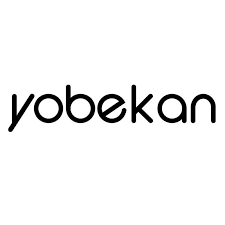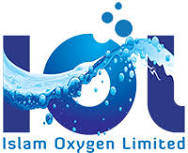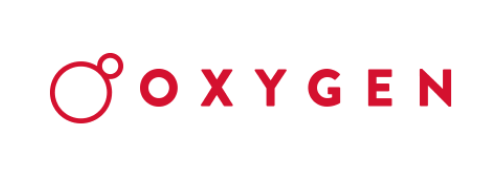Oxygen cylinder availability varies depending on location and demand. In some areas, there may be limited oxygen cylinder availability due to the high demand caused by the COVID-19 pandemic.
It is important to contact local hospitals, medical supply stores, and healthcare providers to inquire about the availability of oxygen cylinders in your area. Additionally, government websites and social media platforms are valuable resources for information on oxygen cylinder availability and distribution.
It is crucial to stay updated and informed regarding oxygen cylinder availability to ensure the best possible care for those in need.

Credit: www.theguardian.com
Understanding The Importance Of Oxygen Cylinder Availability
Given the current circumstances, understanding the importance of oxygen cylinder availability is crucial. Access to oxygen cylinders can save lives, providing necessary support to individuals facing respiratory difficulties.
Oxygen cylinders play a crucial role in providing life-saving support to individuals with respiratory conditions. During these challenging times, the availability of oxygen cylinders has become more important than ever. In this section, we will explore the impact of oxygen cylinder shortage on healthcare systems, the role of oxygen cylinders in treating respiratory conditions, and the increasing demand for oxygen cylinder availability.
Impact Of Oxygen Cylinder Shortage On Healthcare Systems
The shortage of oxygen cylinders can have severe consequences on healthcare systems, exacerbating the challenges faced during respiratory emergencies. Here’s a breakdown of the impact:
- Overwhelmed healthcare facilities: Inadequate oxygen cylinder availability can strain medical facilities, leading to overwhelmed healthcare providers and limited resources to treat patients effectively.
- Increased mortality rates: When oxygen cylinders are in short supply, patients in critical conditions are at a higher risk of complications or even death due to insufficient oxygen support.
- Lack of accessibility: Limited access to oxygen cylinders can result in delays in providing essential respiratory care, impacting the overall quality of healthcare services.
The Role Of Oxygen Cylinders In Treating Respiratory Conditions
Understanding the significance of oxygen cylinders in treating respiratory conditions is crucial. Here are some key points to consider:
- Oxygen supplementation: Oxygen cylinders provide a concentrated source of oxygen that can be administered to individuals who are unable to breathe adequately on their own. This supplementation greatly improves their oxygen levels and helps alleviate respiratory distress.
- Emergency situations: In cases of acute respiratory emergencies, oxygen cylinders become a lifeline for patients who require immediate oxygen therapy to stabilize their breathing and prevent further complications.
- Chronic respiratory diseases: Patients with chronic respiratory conditions, such as chronic obstructive pulmonary disease (COPD) or pulmonary fibrosis, often rely on oxygen cylinders to manage their symptoms and maintain an optimal level of oxygenation.
Increasing Demand And Importance Of Oxygen Cylinder Availability In Current Times
The ongoing health crisis has increased the demand for oxygen cylinders significantly. Here’s why their availability is of paramount importance:
- COVID-19 pandemic: The unprecedented surge in COVID-19 cases has led to a sharp rise in the need for supplemental oxygen. Patients with severe symptoms require oxygen support to help them overcome breathing difficulties and aid their recovery.
- Ensuring capacity for all patients: Adequate oxygen cylinder availability ensures that healthcare systems can cater to the needs of all patients, regardless of the underlying respiratory condition.
- Saving lives: Oxygen cylinders are vital in saving lives. Timely access to oxygen therapy can make a critical difference in the outcomes of patients suffering from various respiratory illnesses.
The availability of oxygen cylinders is indispensable for respiratory care, especially during times of crisis. Understanding the impact of their shortage on healthcare systems, the significance they hold in treating respiratory conditions, and the increasing demand for their availability highlights the urgency in ensuring sufficient access to oxygen cylinders to meet the needs of those who rely on them for survival.
Factors Affecting Oxygen Cylinder Availability
The availability of oxygen cylinders is influenced by various factors, including supply chain disruptions, high demand, and logistic challenges. These elements play a vital role in determining the accessibility and availability of oxygen cylinders for those in need.
The availability of oxygen cylinders plays a critical role in ensuring timely access to life-saving oxygen therapy for patients in need. However, various factors can impact the availability of oxygen cylinders, making it important to understand the key challenges involved.
Below are the factors that affect oxygen cylinder availability:
Global Supply Chain Challenges:
- Transportation restrictions due to geopolitical conflicts or natural disasters can disrupt the global supply chain of oxygen cylinders.
- Trade barriers and import/export regulations can limit the flow of oxygen cylinders across countries.
- Fluctuations in currency exchange rates can affect the cost and availability of imported oxygen cylinders.
- High demand from multiple countries, especially during emergencies, can strain the global supply chain.
Bottlenecks In Manufacturing And Distribution:
- Limited production capacity and manufacturing constraints can lead to insufficient supply of oxygen cylinders.
- Delays in procuring raw materials for cylinder production can impact manufacturing timelines.
- Inadequate distribution networks and inefficient logistics systems can hinder the timely delivery of oxygen cylinders to hospitals and healthcare facilities.
Government Policies And Regulations:
- Stringent regulations and licensing requirements for manufacturing and distributing oxygen cylinders can create barriers to entry and limit the number of suppliers.
- Price controls and government interventions in the oxygen cylinder market can deter manufacturers and distributors from meeting the demand.
- Inconsistent policies and regulations across different regions can create confusion and disrupt the supply chain.
Impact Of Pandemics On Oxygen Cylinder Availability:
- During pandemics or healthcare crises, there is often a surge in demand for oxygen cylinders, overwhelming the existing supply.
- Increased hospitalizations and oxygen usage for COVID-19 patients can lead to shortages of oxygen cylinders.
- Export restrictions imposed by producing countries to prioritize domestic needs can limit the availability of oxygen cylinders in other regions.
Addressing these factors is crucial to ensure the availability of oxygen cylinders to meet the healthcare needs of patients. Governments, manufacturers, and international organizations must work together to overcome these challenges and establish robust systems for the production, distribution, and availability of oxygen cylinders.
Timely access to life-saving oxygen therapy should be a priority to save lives and ensure better healthcare outcomes.
Strategies To Ensure Oxygen Cylinder Availability
Ensure availability of oxygen cylinders with effective strategies, ensuring a steady supply for critical patients. Implement measures such as efficient distribution networks, proper inventory management, and collaboration with manufacturers to meet the rising demand.
Oxygen Cylinder Availability:
In times of crisis, ensuring the availability of essential medical supplies such as oxygen cylinders becomes crucial to saving lives. Here, we will explore effective strategies to ensure the availability of oxygen cylinders. From increasing production capacity to collaborating between government, healthcare institutions, and manufacturers, these strategies aim to meet the growing demand and combat the challenges faced during these unprecedented times.
Increasing Production Capacity
To address the increasing demand for oxygen cylinders, it is essential to ramp up their production capacity. Here are some key strategies to consider:
- Upgrading Manufacturing Facilities: Investing in modernizing existing manufacturing facilities can significantly increase their production capabilities. By incorporating advanced machinery and automation, the production process becomes more efficient and streamlined.
- Expanding Production Lines: Setting up additional production lines dedicated solely to manufacturing oxygen cylinders can expedite the process. By focusing on this critical aspect, manufacturers can meet the rising demand effectively.
- Encouraging Private Sector Participation: Collaborating with private sector companies that have the resources and expertise to manufacture medical-grade oxygen cylinders can help supplement the existing supply. Incentives and subsidies can be provided to encourage such partnerships.
Importing Oxygen Cylinders
When local production capacity falls short, importing oxygen cylinders can bridge the gap. Here are some considerations to ensure a smooth importation process:
- Streamlining Import Procedures: Simplifying and expediting the importation process can significantly speed up the availability of oxygen cylinders. Removing unnecessary bureaucracy, reducing paperwork, and improving customs clearance procedures can help ensure timely imports.
- Establishing Global Partnerships: Developing partnerships with countries and international organizations that have surplus oxygen cylinder supplies can facilitate imports. Negotiating favorable trade agreements and forming alliances can aid in obtaining the necessary resources efficiently.
Implementing Efficient Distribution Systems
Efficient distribution systems are crucial in ensuring that oxygen cylinders reach where they are needed most. Key strategies in this regard include:
- Centralized Distribution Centers: Establishing centralized distribution centers strategically located in different regions allows for efficient inventory management and ensures timely and seamless delivery of oxygen cylinders to healthcare facilities.
- Priority Allocation: Implementing a priority allocation system can help prioritize the distribution of oxygen cylinders based on the severity of the situation. By ensuring that critical care units and hospitals in areas with higher demand receive cylinders on priority, lives can be saved effectively.
- Real-time Tracking: Utilizing technology for real-time tracking of oxygen cylinder stocks and deliveries can enhance supply chain management. Tracking systems enable proactive measures to be taken in case of any disruptions or shortages.
Collaboration Between Government, Healthcare Institutions, And Manufacturers
Collaboration between the government, healthcare institutions, and manufacturers is vital in addressing the challenges associated with oxygen cylinder availability. Key strategies encompass:
- Information Sharing: Establishing a robust communication framework where all stakeholders can share real-time information about demand, supply, and logistical challenges can help in better allocation and distribution of oxygen cylinders.
- Pooling Resources: Pooling resources, both financial and infrastructural, can help scale up production and distribution capacities. Joint initiatives and partnerships ensure a collective response to the crisis for maximum effectiveness.
- Proactive Planning: Collaborative planning between the government, healthcare institutions, and manufacturers can help anticipate and mitigate any future shortage risks. By working together, they can devise contingency plans and implement measures to ensure a constant and adequate supply of oxygen cylinders.
By implementing these strategies, we can strive towards overcoming the challenges faced in ensuring the availability of oxygen cylinders. A collective effort and proactive approach are paramount to meeting the increasing demand and saving lives during critical times.
Ensuring Oxygen Cylinder Availability In Emergency Situations
Ensure availability of oxygen cylinders during emergencies for immediate access to life-saving treatment. Our reliable and accessible supply helps save lives when every second counts.
In times of emergency, ensuring the availability of oxygen cylinders is crucial. Whether it’s a natural disaster or a health crisis, having a robust supply chain and distribution system in place can save lives. In this section, we will explore various aspects of oxygen cylinder availability in emergency situations, focusing on disaster preparedness and planning, stockpiling and inventory management, emergency distribution networks, and prioritizing allocation during a crisis.
Disaster Preparedness And Planning:
- Conducting risk assessments to identify potential emergency scenarios.
- Developing emergency response plans that include oxygen cylinder availability.
- Collaborating with relevant stakeholders to ensure coordination and clarity.
- Establishing communication channels for swift response and decision-making.
- Regularly updating and refining the disaster preparedness plan based on feedback and lessons learned.
Stockpiling And Inventory Management:
- Assessing the existing stock of oxygen cylinders and gauging the demand for emergency situations.
- Establishing a maintenance schedule to ensure cylinders remain in optimal condition.
- Regularly reviewing inventory levels and reordering to avoid shortages.
- Implementing proper record-keeping and tracking systems for transparency and accuracy.
- Collaborating with suppliers to secure a steady flow of oxygen cylinders during emergencies.
Emergency Distribution Networks:
- Establishing a network of distribution centers strategically located to facilitate quick access to oxygen cylinders.
- Developing scalable transportation solutions to expedite delivery to affected areas.
- Collaborating with local authorities and emergency response teams to ensure smooth coordination during distribution.
- Creating a prioritization system to allocate cylinders based on urgency and severity of situations.
- Implementing real-time tracking systems to monitor the movement and availability of oxygen cylinders.
Prioritizing Oxygen Cylinder Allocation During Crisis:
- Identifying critical sectors, such as hospitals and healthcare facilities, as priority recipients of oxygen cylinders.
- Ensuring equitable distribution to areas with high population density or limited healthcare infrastructure.
- Collaborating with medical professionals and experts to establish criteria for allocating cylinders based on medical needs.
- Implementing a fair and transparent allocation process, avoiding favoritism or discrimination.
- Regularly reviewing and updating the allocation process to adapt to changing circumstances.
By focusing on disaster preparedness, efficient inventory management, well-established distribution networks, and fair allocation strategies, we can better ensure the availability of oxygen cylinders in emergency situations. This proactive approach can make a significant difference in saving lives when time is of the essence.
Tips For Finding And Accessing Oxygen Cylinders
Looking for oxygen cylinders? Find out how to locate and access them easily with these helpful tips. Ensure availability whenever you need it.
Contacting Local Healthcare Providers And Pharmacies:
- Reach out to your local healthcare providers and pharmacies to inquire about oxygen cylinder availability. They can provide valuable information and guidance on accessing this essential resource for medical purposes.
- Ask if they have oxygen cylinders in stock and if they are available for rental or purchase.
- Inquire about any specific requirements or documentation needed to obtain an oxygen cylinder.
- Get details about the process of procuring an oxygen cylinder, such as whether it can be delivered or if you need to pick it up.
Online Resources And Platforms For Oxygen Cylinder Availability:
- Utilize online resources and platforms to find information about oxygen cylinder availability in your area. These platforms can be valuable tools in your search for this vital medical equipment.
- Check websites that offer listings of medical supply stores or local businesses that provide oxygen cylinders.
- Look for online forums or communities where individuals share their experiences and recommendations regarding oxygen cylinder availability.
- Use social media platforms to connect with groups or organizations that may have information on where to find available oxygen cylinders.
Non-Profit Organizations And Community Initiatives:
- Explore non-profit organizations and community initiatives that may provide assistance in locating and accessing oxygen cylinders.
- Some non-profit organizations may have initiatives specifically dedicated to helping individuals in need of oxygen cylinders.
- Reach out to local community centers, religious organizations, or charitable foundations that may be able to provide guidance or resources.
- These organizations might have connections with suppliers, healthcare professionals, or volunteers who can assist in finding oxygen cylinder availability.
Home Oxygen Concentrators As An Alternative:
- Consider home oxygen concentrators as an alternative to traditional oxygen cylinders. These devices extract oxygen from the surrounding air, eliminating the need for refills or replacements.
- Home oxygen concentrators are easy to use and provide a continuous supply of oxygen for patients who require it.
- Consult your healthcare provider to determine if a home oxygen concentrator is suitable for your specific medical needs.
- Research different models and brands of home oxygen concentrators to find the one that best fits your requirements and budget.
Remember, in your search for oxygen cylinder availability, it is crucial to inquire with local healthcare providers, explore online resources, connect with non-profit organizations, and consider alternative options such as home oxygen concentrators. By employing these strategies, you can increase your chances of finding the oxygen cylinders you need for optimal medical care.
Educating The Public On Oxygen Cylinder Availability
Discover the latest information and resources on oxygen cylinder availability, ensuring the public is well-informed and prepared during times of need. Stay updated on availability and distribution to ensure access to life-saving oxygen.
Raising Awareness About Oxygen Cylinder Shortages
The current COVID-19 pandemic has contributed to an overwhelming surge in the demand for oxygen cylinders. Unfortunately, many countries and healthcare systems are experiencing shortages in the availability of these life-saving devices. It is crucial to educate the public about this issue to ensure that oxygen cylinders are used responsibly and reach those who need them the most.
Here are some key points to raise awareness about the oxygen cylinder shortages:
- Increased demand: Due to the rise in COVID-19 cases, hospitals and individuals alike are in dire need of oxygen cylinders to treat patients with severe respiratory distress.
- Overburdened healthcare systems: Oxygen cylinders are essential in providing respiratory support to patients. However, the high demand is putting immense strain on healthcare systems, making it challenging to meet everyone’s needs.
- Global impact: Oxygen shortages are not limited to one region or country; they are a worldwide concern. This shortage affects both developed and developing nations, highlighting the urgent need for action.
- Importance of responsible usage: With limited resources, it is crucial for individuals to use oxygen cylinders responsibly. Unnecessary or inappropriate usage can further exacerbate the shortage, leaving those in critical condition without access to life-saving treatment.
Promoting Responsible Usage Of Oxygen Cylinders
To combat the oxygen cylinder shortage, it is essential to promote responsible usage among the general public. By doing so, we can ensure that these vital resources reach those who need them the most. Here are some key points to consider when advocating for responsible usage:
- Prescribed usage only: Oxygen cylinders should only be used as directed by healthcare professionals. It is important to follow prescribed guidelines, including flow rates and duration, to avoid wastage and misuse.
- Avoid hoarding: Stockpiling oxygen cylinders or purchasing them for non-medical purposes can lead to further shortages. It is crucial to discourage hoarding and prioritize the needs of hospitals and healthcare facilities.
- Prioritizing critical patients: Oxygen cylinders must be allocated based on the severity of patients’ conditions. By prioritizing the most critical cases, we can ensure that those in life-threatening situations receive the necessary care.
Sharing Information On Availability And Access Points
One way to address the oxygen cylinder scarcity is by providing accurate and up-to-date information on availability and access points. By sharing this information with the public, we can help individuals and healthcare providers make informed decisions regarding oxygen cylinder usage.
Here are some key points to consider when sharing information:
- Local availability: Information about where oxygen cylinders are available in specific cities or regions can help individuals locate the nearest sources of supply.
- Contact details: Sharing contact information for hospitals, healthcare centers, or organizations that provide oxygen cylinders ensures that those in need can easily reach out for assistance.
- Online platforms: Utilizing online platforms, such as dedicated websites or social media channels, to share real-time updates on oxygen cylinder availability can be immensely helpful for both healthcare providers and individuals seeking help.
Encouraging Support And Donations To Improve Availability
Addressing the oxygen cylinder shortage requires collective efforts and support from all members of society. By encouraging support and donations, we can help improve the availability of these life-saving devices. Here are some key points to consider when advocating for support and donations:
- Collaboration with organizations: Collaborating with reputable organizations and NGOs can help streamline the distribution of oxygen cylinders and ensure they reach the places where they are most needed.
- Fundraising campaigns: Launching fundraising campaigns can generate financial resources for procuring oxygen cylinders and supporting healthcare facilities. Engaging the community in these campaigns can create a sense of solidarity and prompt greater contributions.
- Donations of unused cylinders: Individuals or organizations that may have unused or surplus oxygen cylinders can donate them to hospitals or healthcare centers in need. Facilitating this process by providing donation guidelines and appropriate collection points can encourage valuable contributions.
The current oxygen cylinder shortage calls for immediate action and widespread awareness. By promoting responsible usage, sharing information on availability, and encouraging support and donations, we can collectively work towards ensuring that this essential resource is accessible to those who require it the most.
Together, let’s make a difference in the lives of those impacted by this critical shortage.
Frequently Asked Questions Of Oxygen Cylinder Availability
Where Can I Find Oxygen Cylinder Availability?
You can find information about oxygen cylinder availability at your local government health department website or by contacting nearby hospitals and medical supply stores.
How Can I Check The Availability Of Oxygen Cylinders In My City?
To check the availability of oxygen cylinders in your city, you can contact local hospitals, medical supply stores, or check online platforms that provide real-time updates on oxygen cylinder availability.
What Should I Do If I Cannot Find An Available Oxygen Cylinder?
If you are unable to find an available oxygen cylinder, contact your local health authorities for guidance. They may be able to provide alternatives or direct you to resources for oxygen concentrators, which can be an alternative to oxygen cylinders.
Are There Any Online Platforms Where I Can Purchase Oxygen Cylinders?
Yes, there are online platforms where you can purchase oxygen cylinders. However, it is advisable to consult with medical professionals or local health authorities before making any online purchases to ensure the quality and authenticity of the product.
Conclusion
The availability of oxygen cylinders is of utmost importance, especially during these challenging times. The high demand for medical oxygen has led to an increasing need for readily available cylinders. It is essential for healthcare facilities, both public and private, to ensure a sufficient supply of these life-saving devices.
Moreover, individuals and organizations should also play their part in supporting this cause by promoting responsible usage and avoiding hoarding. The government and medical regulatory bodies must take proactive measures to streamline the distribution and allocation process to ensure equitable access for everyone in need.
By prioritizing the production, distribution, and maintenance of oxygen cylinders, we can collectively navigate through this global health crisis. Let us remember that the availability of oxygen cylinders is not just a matter of convenience, but a matter of saving lives.
Together, we can overcome these challenges and provide adequate support to those battling with respiratory difficulties.








